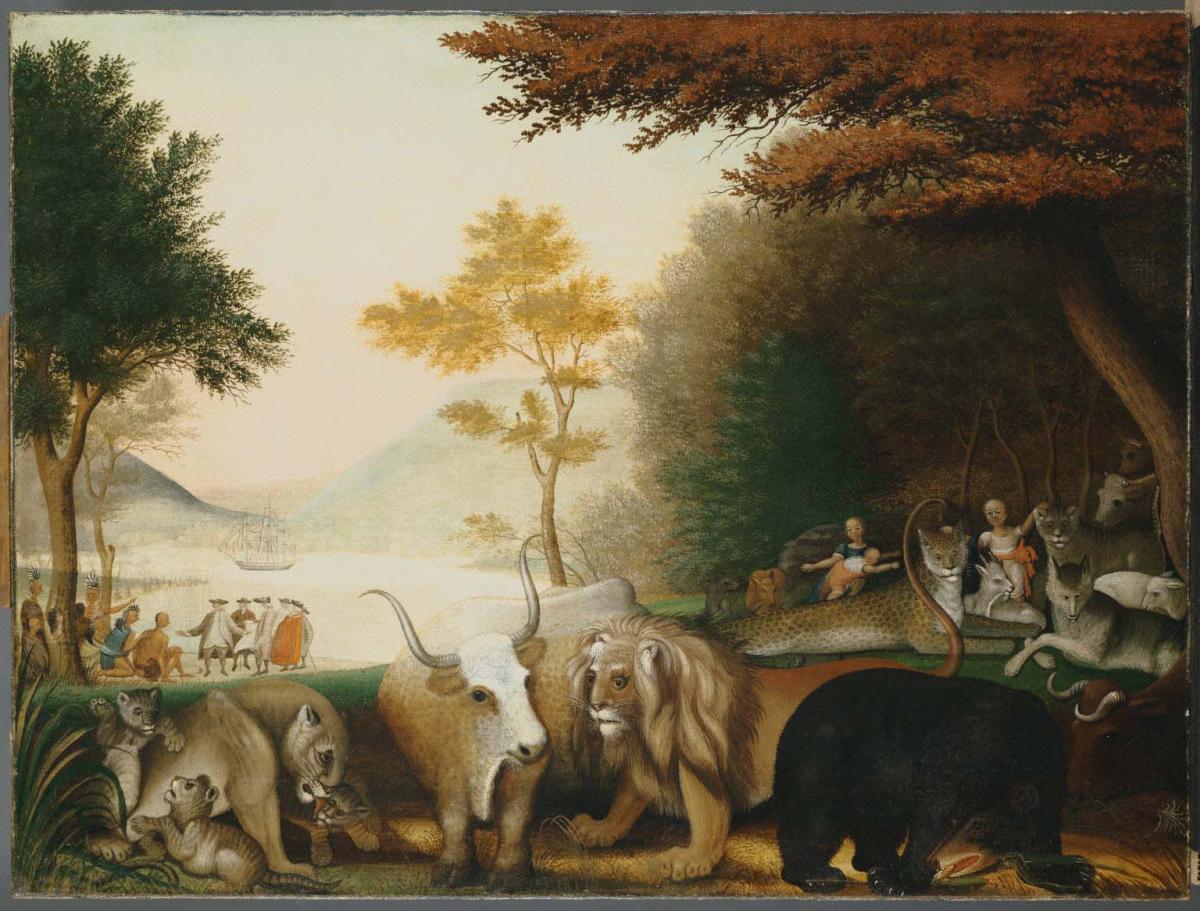The Peaceable Kingdom
Edward Hicks ( between 1845 and 1846 )

Edward Hicks freely employed the conventions of commercial decoration to illustrate his favorite biblical passage—Isaiah’s prophecy (Isaiah 11:6-9) that heaven on earth could be achieved. Each of the more than one hundred Peaceable Kingdoms he left with friends can be read like one of his sermons telling of his particular feelings and concerns. Hicks imaginatively poeticized this verse, which became the basis for the series, even writing the poem along the frame in some cases:
The wolf did with the lambkin dwell in peace
His grim carnivorous nature there did cease
The leopard with the harmless kid laid down
And not one savage beast was seen to frown.
The lion with the fatling on did move
A little child was leading them in love…
This version is a late work, painted only four years before his death, and presents a variety of animals co-existing in the foreground, while William Penn negotiates the treaty with the Delaware Indians in the distance. Like other late examples, this Peaceable Kingdom has a sensitivity to the natural world that reveals Hicks’s interest in direct observation of his environs. Even the anthropomorphic expressions of the animals project a gentler air than the agitated ferocity seen in earlier Kingdoms. During these late works, Hicks seemed to revel in a recently developed assurance in depicting spatial recession and atmospheric effects. A sense of realism prevails, and pictorial harmony triumphs over literal interpretation of the text. Unlike most pietistic art of the nineteenth century, Hicks’s Peaceable Kingdom expertly combines allegory with naturalism as in medieval manuscript illuminations, and holds the interest of twentieth-century artists weary of pseudo-naturalistic academic art.